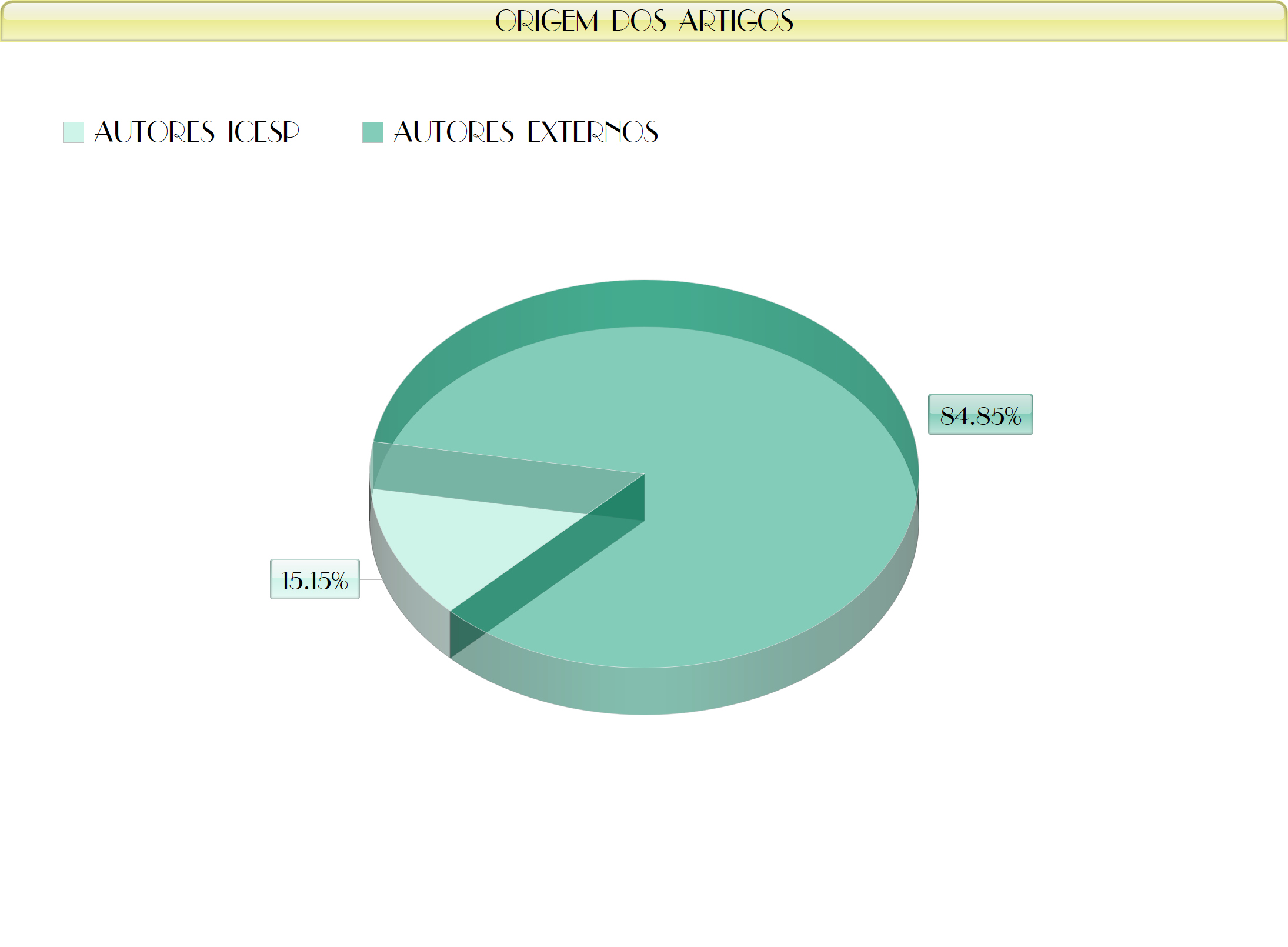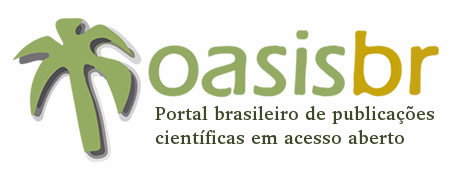Diabetes Mellitus: Perspectivas para diagnóstico e terapêutica a partir de edição genética por CRISPR-CAS9. | Diabetes Mellitus: Perspectives for diagnosis and therapy based on CRISPR-CAS9 genetic editing.
Resumo
Objetivo: abordar as diferentes aplicações da ferramenta de edição gênica “Clustered Regularly Interspaced Short Palindromic Repeats” (CRISPR) e “crispr associated protein-9” (Cas9) na caracterização, prevenção, susceptibilidade genética, diagnóstico e terapêutica da diabetes mellitus (DM). Fonte de dados: foi realizado um levantamento bibliográfico das publicações disponíveis nas bases da National Library of Medicine (NIH – PubMed), Scientific Eletronic Library Online (Scielo) e Scholar Google dos últimos 20 anos, priorizando publicações dos últimos 5 anos. Síntese dos dados: considerando que a DM é uma doença crônica de caráter metabólico sob influência de variantes genéticas e, muitas vezes, associadas a interações ambientais, com altos índices epidemiológicos de incidência e prevalência no Brasil e no mundo e tendo diversas limitações na prática clínica e diagnóstica, ferramentas inovadoras de edição gênica possuem potencial para contribuir positivamente na problemática da DM como a CRISPR-Cas9. CRISPR é um sistema de manipulação gênica sítio-específico guiado por RNA e inspirado no funcionamento do sistema imune bacteriano que tem apresentado resultados promissores para estudo de diversas doenças. Conclusão: o sistema CRISPR-Cas9, apesar de algumas limitações técnicas e éticas, é promissor em virtude de sua sensibilidade e especificidade, sendo uma alternativa aos métodos clássicos para compreensão das bases genéticas e fisiopatológicas da DM e que permite desenvolver e aplicar modelos de estudo aplicados à elucidação de novas e mais eficientes estratégias de diagnóstico e tratamento.
Palavras-chave: diabetes mellitus; crispr-cas9; diagnóstico; terapêutica; edição gênica.
-----------------------------------------------------------------------------------------
Abstract
Objective: Adress the different applications of the “Clustered Regularly Interspaced Short Palindromic Repeats” (CRISPR) and “crispr associated protein-9” (Cas9) gene editing tool in the characterization, prevention, genetic susceptibility, diagnosis and therapeutic of diabetes mellitus (DM). Data sources: A bibliographic survey of the publications available in the databases of the National Library of Medicine (NIH - PubMed), Scientific Eletronic Library Online (Scielo) and Scholar Google for the last 20 years was carried out, prioritizing publications from the last 5 years. Summary of the data: Considering that DM is a chronic metabolic disease under the influence of genetic variants and often associated with environmental interactions, with high epidemiological rates of incidence and prevalence in Brazil and in the world and with several limitations in clinical and diagnostic practice, tools Gene editing innovators have the potential to contribute positively to the problem of DM such as CRISPR-Cas9. CRISPR is a site-specific gene manipulation system guided by RNA and inspired by the functioning of the bacterial immune system that has shown promising results for the study of several diseases. Conclusion: The CRISPR-Cas9 system, despite some technical and ethical limitations, is promising due to its sensitivity and specificity, being an alternative to classic methods for understanding the genetic and pathophysiological bases of DM and which allows the development and application of study models applied to the elucidation of new and more efficient diagnosis and treatment strategies.
Keywords: diabetes mellitus; crispr-cas9; diagnosis; therapeutics; gene editing.
Palavras-chave
Texto completo:
Artigo em PortuguêsReferências
Nussbaum RL, Mcinnes RR, Willard HF, Hamosh A. Thompson & Thompson: Genética Médica. 8ª ed. Rio de Janeiro: Elsevier; 2016.
Saeedi P, Petersohn I, Salpea P, Malanda B, Karuranga S, Unwin N, et al. Global and regional diabetes prevalence estimates for 2019 and projections for 2030 and 2045: Results from the International Diabetes Federation Diabetes Atla, 9th edition. Diabetes Res Clin Pract. 2019;157: 107843-107853.
Williams R, Karuranga S, Malanda B, Saeedi P, Basit A, Besançon S, et al. Global and regional estimates and projections of diabetes-related health expenditure: Results from the International Diabetes Federation Diabetes Atlas, 9th edition. Diabetes Res Clin Pract. 2020;108072-10808078.
Sneddon JB, Tang Q, Stock P, Bluestone JA, Roy S, Desai T, Hebrok M. Stem Cell therapies for treating diabetes: progress and remaining challenges. Cell Stem Cell. 2018;22(6):810–23.
Kaufmann KB, Büning H, Galy A, Schambach A, Grez M. Gene therapy on the move. EMBO Mol Med. 2013;5(11):1642–61.
Adli M. The CRISPR tool kit for genome editing and beyond. Nat Commun. 2018; 9(1):1-13.
Khan SH. Genome-editing technologies: concept, pros, and cons of various genome-editing techniques
and bioethical concerns for clinical application. Mol Ther Nucleic Acids. 2019;16:326–34.
Li H, Yang Y, Hong W, Huang M, Wu M, Zhao X. Applications of genome editing technology in the targeted therapy of human diseases: mechanisms, advances and prospects. Signal Transduct Target Ther. 2020;5(1):1-23.
Koeppen BM, Stanton BA. Berne & Levy: Fisiologia. 7ª ed. Rio de Janeiro: Elsevier; 2018.
Teo AKK, Gupta MK, Doria A, Kulkarni RN. Dissecting diabetes/metabolic disease mechanisms using pluripotent stem cells and genome editing tools. Mol Metab. 2015;4(9):593–604.
DeFronzo RA, Ferrannini E, Groop L, Henry RR, Herman WH, Holst JJ, et al. Type 2 diabetes mellitus. Nat Rev Dis Prim. 2015;1(1):1–22.
Katsarou A, Gudbjörnsdottir S, Rawshani A, Dabelea D, Bonifacio E, Anderson BJ, Jacobsen LM, Schatz DA, Lernmark A. Type 1 diabetes mellitus. Nat Rev Dis Prim. 2017;3(1):1–18.
Cuschieri S. The genetic side of type 2 diabetes – A review. Diabetes Metab Syndr. 2019;13(4):2503 6.
Skyler JS, Bakris GL, Bonifacio E, Darsow T, Eckel RH, Groop L, et al. Differentiation of diabetes by pathophysiology, natural history, and prognosis. Diabetes. 2017;66(2):241–255.
Karaa A, Goldstein A. The spectrum of clinical presentation, diagnosis, and management of mitochondrial forms of diabetes. Pediatr Diabetes. 2015;16(1):1–9.
Misra S, Owen KR. Genetics of monogenic diabetes: present clinical challenges. Curr Diab Rep. 2018;18(12):141.
Kleinberger JW, Pollin TI, Medicine G. Personalized medicine in diabetes mellitus: current opportunities and future prospects. Ann N Y Acad Sci. 2016;1346(1):45–56.
American Diabetes Association. Classification and diagnosis of diabetes. Diabetes Care. 2015;38:S8–16.
Atkinson MA, Eisenbarth GS, Michels AW. Type 1 diabetes. Lancet. 2014;383(9911):69–82.
DiMeglio LA, Evans-Molina C, Oram RA. Type 1 diabetes. Lancet. 2018;391(10138):2449‐62.
Care D, Suppl SS. 2. Classification and diagnosis of diabetes: Standards of medical care in diabetes - 2019. Diabetes Care. 2019;42:S13–28.
Törn C, Hadley D, Lee HS, Hagopian W, Lernmark Å, Simell O, et al. Role of type 1 diabetes associated SNPs on risk of autoantibody positivity in the TEDDY study. Diabetes. 2015;64(5):1818–29.
Kahn SE, Hull RL, Utzschneider KM. Mechanisms linking obesity to insulin resistance and type 2 diabetes. Nature. 2006;444(7121):840–6.
Sladek R, Rocheleau G, Rung J, Dina C, Shen L, Serre D, et al. A genome-wide association study identifies novel risk loci for type 2 diabetes. Nature. 2007;445(7130):881–5.
Beer NL, Gloyn AL. Genome-edited human stem cell-derived beta cells: a powerful tool for drilling down on type 2 diabetes GWAS biology. F1000Res. 2016;5:1-12.
da Silva Xavier G, Hodson DJ. Mouse models of peripheral metabolic disease. Best Pract Res Clin Endocrinol Metab. 2018;32(3):299–315.
Kwak SH, Park KS. Recent progress in genetic and epigenetic research on type 2 diabetes. Exp Mol Med 2016;48(3):e220.
Grotz, AK, Abaitua F, Navarro-Guerrero E, Hastoy B, Ebner D, Gloyn AL. A CRISPR/Cas9 genome editing pipeline in the EndoC-βH1 cell line to study genes implicated in beta cell function. Wellcome Open Res. 2019;4:150.
Bonnefond A, Clément N, Fawcett K, Yengo L, Vaillant E, Guillaume JL, et al. Rare MTNR1B variants impairing melatonin receptor 1B function contribute to type 2 diabetes. Nat Genet. 2012;44(3):297–301.
Mahajan A, Taliun D, Thurner M, Robertson NR, Torres JM, Rayner NW, et al. Fine-mapping of an expanded setset of type 2 diabetes loci to single-variant resolution using high-density imputation and islet- specific epigenome maps. Nat Genet.
;50(11):1505–13.
Balboa D, Prasad RB, Groop L, Otonkoski T. Genome editing of human pancreatic beta cell models: problems, possibilities and outlook. Diabetologia. 2019;62(8):1329–1336.
Makarova KS, Wolf YI, Alkhnbashi OS, Costa F, Shah SA, Saunders SJ, et al. An updated evolutionary classification of CRISPR-Cas systems. Nat Rev Microbiol. 2015;13(11):722–36.
Rath D, Amlinger L, Rath A, Lundgren M. The CRISPR-Cas immune system: Biology, mechanisms and applications. Biochimie. 2015;117:119–28.
Koonin EV, Makarova KS, Zhang F. Diversity, classification and evolution of CRISPR-Cas systems. Curr Opin Microbiol. 201737:67-78.
Qomi, SB, Asghari, A, Mojarrad, M. An Overview of the CRISPR-based genomic and epigenome editing system: function, applications, and challenges. Adv Biomed Res. 2019;8:49.
Jiang F, Doudna JA. CRISPR–Cas9 structures and mechanisms. Annu Rev Biophys. 201746:505-29. 37. Wu X, Kriz AJ, Sharp PA. Target specificity of the CRISPR-Cas9 system. Quant Biol. 2014;2(2):59-70.
Komor AC, Badran AH, Liu DR. CRISPR-based technologies for the manipulation of eukaryotic genomes. Cell. 2017;168(1–2):20–36.
Doudna JA, Charpentier E. The new frontier of genome engineering with CRISPR-Cas9. Science. 2014;346(6213):1258096.
Wang H, La Russa M, Qi LS. CRISPR/Cas9 in genome editing and beyond. Annu Rev Biochem. 2016;85(1):227–64.
Shen B, Zhang W, Zhang J, Zhou J, Wang J, Chen L, et al. Efficient genome modification by CRISPR-Cas9 nickase with minimal off-target effects. Nat Methods. 2014;11(4):399–402.
Larson MH, Gilbert LA, Wang X, Lim WA, Weissman, JS, Qi LS. CRISPR interference (CRISPRi) for sequence-specific control of gene expression. Nat protoc. 2013;8(11):2180–96.
Gilbert LA, Larson MH, Morsut L, Liu Z, Brar GA, Torres SE, et al. CRISPR-mediated modular RNA-guided regulation of transcription in eukaryotes. Cell. 2013;154(2):442–51.
Giménez CA, Ielpi M, Mutto A, Grosembacher L, Argibay P, Pereyra-Bonnet F. CRISPR-on system for the activation of the endogenous human INS gene. Gene Ther. 2016;23(6):543–7.
Doench JG. Am i ready for CRISPR? A user’s guide to genetic screens. Nat Rev Genet. 2018;19(2):67–80.
Kuscu C, Parlak M, Tufan T, Yang J, Szlachta K, Wei X, Mammadov R, Adli M. CRISPR-STOP: Gene silencing through base-editing-induced nonsense mutations. Nat Methods. 2017;14(7):710–12.
Chen C, Cohrs CM, Stertmann J, Bozsak R, Speier S. Human beta cell mass and function in diabetes: Recent advances in knowledge and technologies to understand disease pathogenesis. Mol Metab. 2017;6(9):943–57.
Balboa D, Saarimäki-Vire J, Borshagovski D, Survila M, Lindholm P, Galli E, et al. Insulin mutations impair beta-cell development in a patient-derived iPSC model of neonatal diabetes. Elife. 2018;7:e38519.
Zhu Z, Li QV, Lee K, Rosen BP, González F, Soh CL, et al. Genome Editing of Lineage Determinants in Human Pluripotent Stem Cells Reveals Mechanisms of Pancreatic Development and Diabetes. Cell Stem Cell. 2016;18(6):755–68.
Thomsen SK, Ceroni A, Van De Bunt M, Burrows C, Barrett A, Scharfmann R, et al. Systematic functional characterization of candidate causal genes for type 2 diabetes risk variants. Diabetes. 2016;65(12):3805–11.
Wang HX, Li M, Lee CM, Chakraborty S, Kim HW, Bao G, et al. CRISPR/Cas9-Based genome editing for disease modeling and therapy: Challenges and opportunities for nonviral Delivery Chem Ver. 2017;117(15):9874–06.
Rees DA, Alcolado JC. Animal models of diabetes. Diabet Med 2004;22(4):359–70.
Lin X, Pelletier S, Gingras S, Rigaud S, Maine CJ, Marquardt K, et al. CRISPR-Cas9-mediated modification of the NOD mouse genome with Ptpn22R619W mutation increases autoimmune diabetes. Diabetes. 2016;65(8):2134–8.
Roh JI, Lee J, Park SU, Kang YS, Lee J, Oh AR, et al. CRISPR-Cas9-mediated generation of obese and diabetic mouse models. Exp Anim. 2018;67(2):229–37.
Uppada V, Gokara M, Rasineni GK. Diagnosis and therapy with CRISPR advanced CRISPR based tools for point of care diagnostics and early therapies. Gene. 2018;656:22–29
Gerace D, Martiniello-Wilks R, Nassif NT, Lal S, Steptoe R, Simpson AM. CRISPR-targeted genome editing of mesenchymal stem cell-derived therapies for type 1 diabetes: A path to clinical success? Stem Cell Res Ther. 2017;8(1):62.
Cabrera O, Berman DM, Kenyon NS, Ricordi C, Berggren PO, Caicedo A. The unique cytoarchitecture of human pancreatic islets has implications for islet cell function. Proc Natl Acad Sci USA. 2006;103(7):2334–39
Bosco D, Armanet M, Morel P, Niclauss N, Sgroi A, Muller YD, et al. Unique arrangement of α- and β-cells in human islets of Langerhans. Diabetes.
;59(5):1202–10.
Wojtusciszyn A, Armanet M, Morel P, Berney T, Bosco D. Insulin secretion from human beta cells is heterogeneous and dependent on cell-to-cell contacts. Diabetologia. 2008;51(10):1843–52.
Liao HK, Hatanaka F, Araoka T, Reddy P, Wu MZ, Sui Y, et al. In vivo target gene activation via CRISPR/Cas9-Mediated trans-epigenetic modulation. Cell. 2017;171(7):1495–507.
Fujimoto K, Polonsky, KS. Pdx1 and other factors that regulate pancreatic β‐cell survival. Diabetes Obes Metab. 2009;11:30-7.
Ma S, Viola R, Sui L, Cherubini V, Barbetti F, Egli D. β Cell replacement after gene editing of a neonatal diabetes-causing mutation at the insulin locus. Stem Cell Rep. 2018;11(6):1407–15.
Cho EY, Ryu JY, Lee HAR, Hong SH, Park HS, Hong KS, et al. Lecithin nano-liposomal particle as a CRISPR/Cas9 complex delivery system for treating type 2 diabetes. J Nanobiotechnology. 2019;17(1):19-31.
Wilbie D, Walther J, Mastrobattista E. Delivery aspects of CRISPR/Cas for in vivo genome editing. Acc Chem Res. 2019;52(6):1555–64.
Kang XJ, Caparas CI, Soh BS, Fan Y. Addressing challenges in the clinical applications associated with CRISPR/Cas9 technology and ethical questions to prevent its misuse. Protein Cell. 2017;8(11):791–5.
Liang P, Xu Y, Zhang X, Ding C, Huang R, Zhang Z, et al. CRISPR/Cas9-mediated gene editing in human tripronuclear zygotes. Protein Cell. 2015;6(5):363–72.
Munsie M, Gyngell C. Ethical issues in genetic modification and why application matters. Curr Opin Genet Dev. 2018;52:7–12.
Pluvinage JF, Fonseca O, Velho R. Tecnologia inova na edição de genes e desafia limites éticos. Ciênc Cult. 2018;70.
Apontamentos
- Não há apontamentos.
Revista Brasileira de Pesquisa em Ciências da Saúde - RBPeCS - ISSN: 2446-5577
Indexadores:













